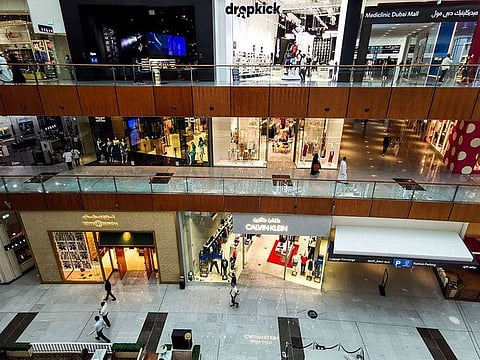UAE’s malls will need a full-scale repurposing
Some shopping experiences from COVID-19 times are here to stay, and malls must learn

Even as a seasoned resident of over three decades in the city, I still find the continuing expansion astonishing. Of course, the most impressive current development is the Expo 2020 site, which has got a grace period of 12 months to be finished.
This means it will surely be even more stunning than was anticipated.
But what is equally striking is the number of new malls nearing completion. The number crunchers would have bet on an increasing population due to the expansion of the city. However, even if they were planning to cater to a restricted geography, one would have expected them to look carefully at places like Maesim, Furjan, Discovery, Jumeirah Beach Road, Wasl Road, etc., where shopping centres that started with great hope are struggling at best.
Dubai was already “over-malled”, and these examples are all from pre-COVID-19 times. When you add the effect of the pandemic to the mix, the challenge becomes monumental.
The places to be
Shopping malls and retail have been central to people’s lives for years. .
Promotional presentations represented malls as the new town squares, where people met and communicated. They went there to enjoy themselves, be entertained with movies, shows and performances, to celebrate at parties, dinners and outings, or to just pass time in a fun environment by themselves.
Of course, people also went to malls to shop – often until they dropped. Retailers vied to retain as many people as possible for as long as possible, with the theory that the longer they stayed, the more they paid. The new buzzword was experiential shopping... and coffee stations, cafes, live performers, fabulous displays and digital magic were all incorporated into the mix.
A common sentiment was, “I don’t buy anything unless I have first seen and felt it”, and so a visit to the shops to find the latest pair of shoes, jeans or accessory was de jure. And these customers were peppered with all manner of tantalizing messages to get them to come and discover.
For visitors and tourists, trips to malls were an essential part of the routine. And there was no getting away from the fantastic attractions that kept them enthralled.
And then, it all changed
In the last four months, something flipped.
Shoppers have become chary about what they really need. Retail therapy lost its therapeutic value with people questioning their own buying and consumption habits. The pandemic has made people conscious of what really is essential.
Many people are having to make do with less cash in hand and store visits have been limited to required purchases. People know what they want, look specifically for it, buy and leave.
Spending time in exotic eateries is no long the zeitgeist. There is no denying that sitting in a coffee shop with or without a mask constantly wondering who around you could be a transmitter takes away a lot of the fun of the experience. And having a party with a group is, well, not possible.
Tourists, of course, are more noticed due to their absence and there is practically no visibility of when they will return.
But these are not the only shifts.
People’s relationship with the online world has taken a new dimension. Working from home has made many users comfortable with spending time online. A report from a March 2020 survey on Statista.com suggests an increase in smartphone and mobile usage by 70 per cent, and computers and laptops by 32 per cent and 40 per cent, respectively. This has become the entree to a world where anyone can go for entertainment, fun, news, information and to keep in touch.
A parallel universe
This familiarity with an unexplored universe at their fingertips has helped overcome many of the doubts about the medium and made people increasingly relaxed about buying there. They have understood how to navigate through a vast range of products they would never have known where to find offline.
Major online stores have done a great job in helping along this process by rapidly expanding offerings, improving deliveries and smoothing customer care responses and returns. Smaller stores have also quickly found their mojo.
For diehards who stick to touch-and-feel buying, online catalogues and freely available information, including about prices, have made it easier to make up their minds. They just need to do their comfort check, get their items and leave.
What now?
Of course, once the pandemic settles down in 12 months - or maybe more - things will find a new equilibrium. But buying habits will take a longer time to change. And the question to ponder is: why would they go back to the old ways?
What does this mean for retailers? Having a store in every mall and development will be seen as an unjustified overkill and to be eschewed. Retailers will really have to redefine their in-store processes, aligning them more with people’s expectations from their online experiences, even hybridizing them.
For malls, it is clear the dilemma for the big players is existential and they will throw money at it to get people back. So what about the new or smaller players?
Perhaps it is time to think about repurposing their properties now, rather than waiting for the inevitable.
- Ajai Kumar Dayal is a retail professional with over three decades’ experience in the UAE.
Sign up for the Daily Briefing
Get the latest news and updates straight to your inbox








